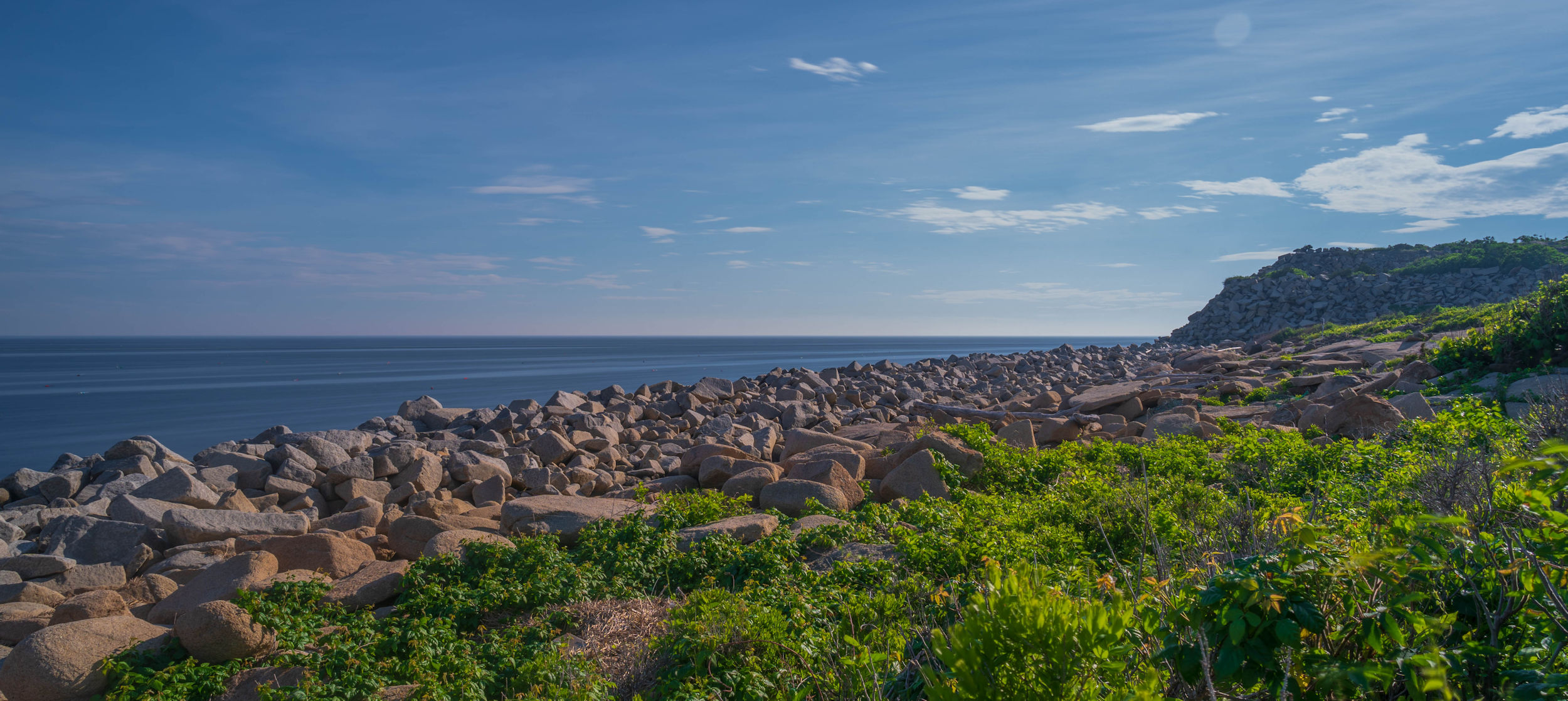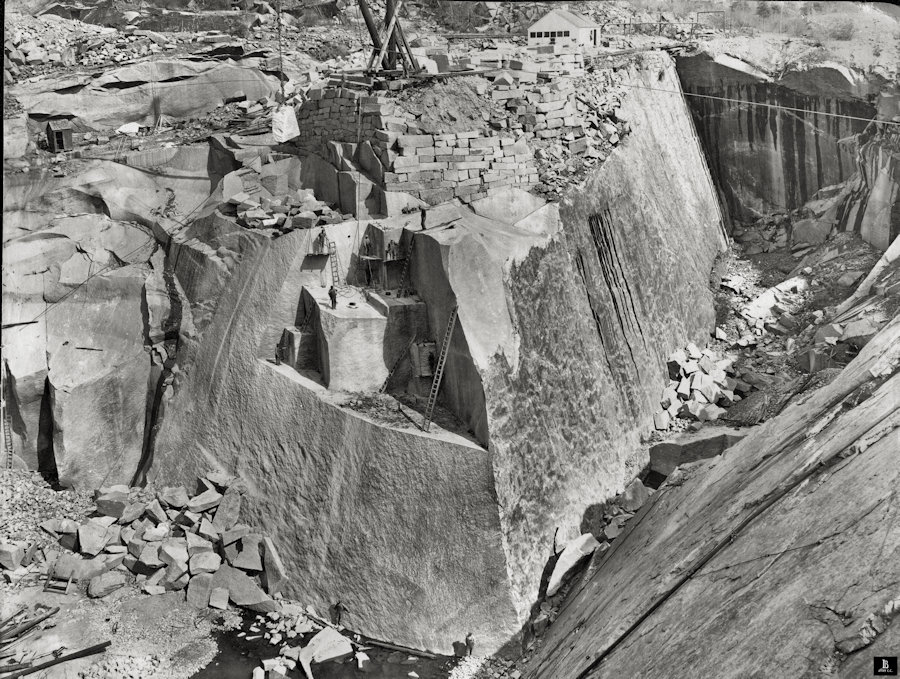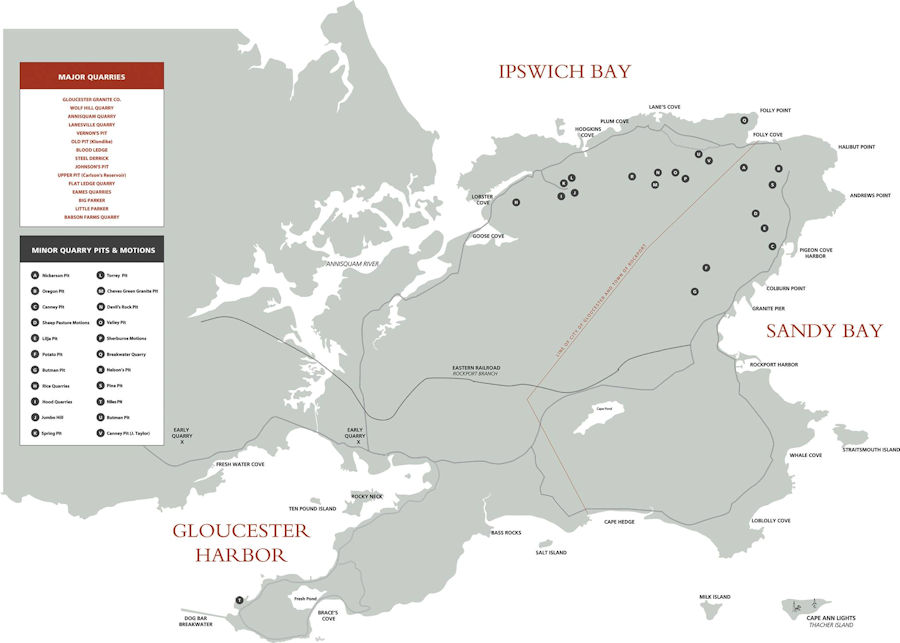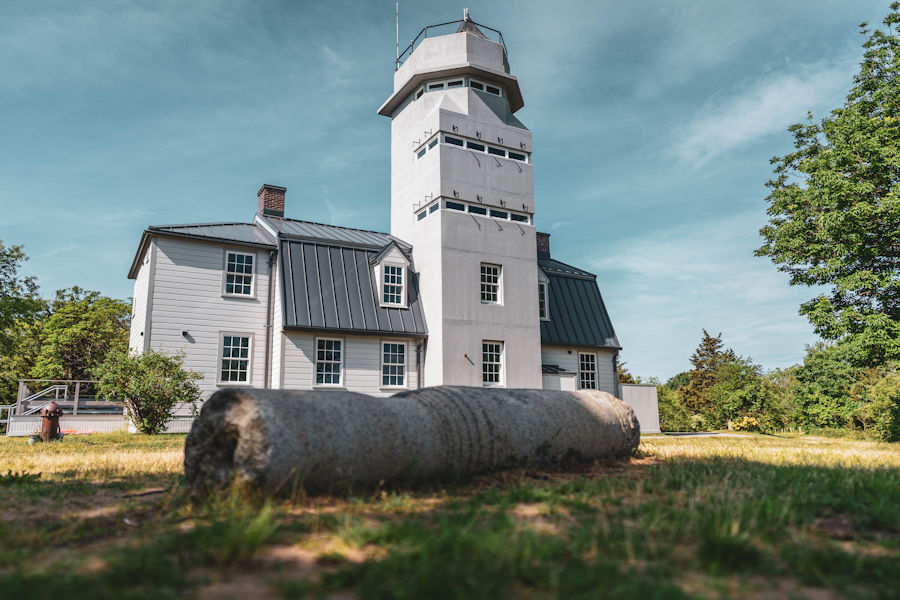Halibut Point Rockport MA The Complete Guide

A Closer Look At The History & Beauty of This Rockport, MA Gem
The story of Halibut Point is, in essence, the story of Rockport, Massachusetts itself. From farming to quarrying and fishing to tourism, the rich history of this scenic state park touches almost all aspects of Rockport’s growth and development.

In this guide To Halibut Point, we will take a deep dive into the history of this popular Rockport destination and take a closer look at the natural beauty that has drawn people to this special spot for decades.
Might as well start from the top. Located at the northern tip of Cape Ann, Halibut Point is a 67-acre state park in Rockport, Massachusetts.
The landscape at Halibut Point is comprised of 440-million-year-old slabs of granite that descend from a rocky headland to a craggy shoreline and provide a fantastic setting for a hike, run, or picnic.

The views at Halibut Point are second to none. On second thought, that’s not entirely true. We’re sure there are some great views at the Grand Canyon or from some Himalayan Mountain top, but the views from Halibut Point are still pretty fantastic.
From the park you can see out to Crane Beach in Ipswich, The Isles of Shoals in New Hampshire, and even Mt Agamenitcus in Maine.
Going back a few hundred years, the park’s earliest visitors were the Pawtucket Indians who lived in northeastern Massachusetts and Southern New Hampshire. The Pawtucket tribes would migrate seasonally to the coastlines of New England to gather berries, fish, and other game.
The Pawtucket were eastern Algonquin speaking and, interestingly, many words we use today came from the Algonquin language. Some examples include locations like – Nashua, Chebacco, and Agawam as well as animals like – chipmunk, raccoon and muskrat.
By the late 17th century European settlers arrived in the area and started utilizing the land for farming and for cattle grazing. There are still traces of Rockport’s earliest inhabitants all around town. For example, the park itself is located just off of Gott Avenue. That road was named after the area’s first resident, Samuel Gott.

Samuel was a weaver. and his first period home (built in 1702) is privately owned and still stands just north of the park entrance. You can find more information on this historic home on the Vintage Rockport website: Details on the Gott House in Pigeon Cove.
Many people think that the name Halibut Point has a fishy origin, it’s a reasonable conclusion but one that’s not entirely accurate. The origin of the name Halibut Point, while still nautical in nature, is actually derived from a sailing term utilized by boats heading down the coastline from Maine.
When the boats reached the tip of Cape Ann the Captain would call out “Haul-about” to reset the sails and navigate around the land mass and head toward Rockport Harbor. Thus, the name Haul-about Point was born.
Over the years, the term, like so many in New England, was shortened (we’re looking at you Dunks) and became Halibut. The history of the name is discussed by Rockport author and historian,
Paul St. Germain in this fun piece by Chronicle:
St. Germain is a wealth of Rockport knowledge and can learn more about his latest book, Saving Straitsmouth Island, here: https://www.capeannmuseum.org/events/saving-straitsmouth-island-virtual-book-launch-author-paul-st-germain/
During the mid-19th century quarrying became the central industry in Rockport. The granite industry became so large that it actually generated as much revenue as Gloucester’s fishing industry in some years.
Up until this point in time Rockport was still just a part of Gloucester, which was founded in 1623. It was not until February 27, 1840, that Rockport was incorporated and became a town.
During the incorporation process, the founders decided to name the town after its most valuable assets: its abundant granite and its strategic ports. Hence Rockport’s very name is intricately intertwined with Halibut Point and its rich quarrying past.
The Babson Quarry located at Halibut Point was one of the larger operations in Rockport. During the initial mining phases, the granite was harvested from the shoreline and other easily accessible surfaces but the operation became much larger once Rockport Granite Company took over.
Interestingly, there is still a Rockport Granite Company in town. Although it’s technically not related to the original Rockport Granite Company, it is great to see the quarrying tradition carried on to this day. You can follow along on their projects and even watch some of the granite extraction process on their Instagram Page Here: https://www.instagram.com/rockportcutgranite/
Anyway, back to the story at hand. The quarrying at Halibut Point directly coincided with the industrial revolution and Rockport was happy to supply growing cities from Boston to New Orleans with their high-quality granite that was known being hard, durable, and free from other minerals that would cause it to discolor.

The reason that the Rockport Granite is so dense is because it was pressed between a 100-million-year layer of sedimentary rock above and volcanic gases and molten rock sweeping from faults below.
In the mid-1800’s granite from Rockport quarries was in high demand in growing cities. Rockport granite was actually used to construct the Longfellow Bridge in Boston, New York’s Holland Tunnel, and even the Brooklyn Bridge.
More than 30 quarries were dug in Rockport and working in the quarries you would find hundreds of workers, many of which were Finnish and Swedish immigrants who had expertise in stone working. If you take a look at the map below you will find the locations of many of Rockport’s quarries. Many of which are now local swimming hole.

It was no small task keeping these quarries dry. When visiting Halibut Point and other local quarries, you will notice that they are now all filled with rain water, runoff and spring water. In the early days, the miners used to keep the quarry dry by hand using oxen harnessed to winches. Later, steam engines were utilized to keep the quarries empty.
Ultimately, the Great Depression was the death knell for the Rockport quarrying industry which collapsed in 1929. After the collapse of the granite industry, the Rockport economy shifted to the arts and fishing industry to continue to support itself.
The park is managed by a collaborative effort between Massachusetts Department of Environmental Management and The Trustees of Reservations. The Trustees initially acquired a portion of the property back in 1934 and the adjoining portion was later acquired by the state in 1981.
The park is open from sunrise to sunset on a daily basis and has a visitor center that you can visit to learn about the park itself.
Attached to the visitor center is a tall fire tower that was utilized during WWII. The tower was a part of the northern defense system which had infrastructure in Rye, NH and Nahant, MA. The Halibut Point tower served as a lookout for German ships and submarines. If spotted the tower would call in the coordinates for a strike.

The park was recently updated with 4.6M in renovations that improve accessibility, provide a better guest experience and more environmentally friendly facilities.
There is parking on site, for a small fee and restrooms available.
MA resident $5
Non-MA resident $20
Trustees of Reservations Members Free
MA State Parks Pass Members Free
There are free trail maps available on site and you can download one right here:
Halibut Point Map
Halibut Point Self Guided Tour
On busy days the lot can fill up at which point the lot will be closed for 2 hours until it clears out a bit. If you’re looking to pass some time you can drive around the corner to the Lobster Pool and indulge in some delicious seafood in a classic New England Lobster Shack that is right on the water.

Halibut Point is a New England treasure that is well worth visiting on your trip to Cape Ann. The story of this 67 acre plot of land is one that follows Rockport’s development from farming to quarrying to fishing and ultimately tourism.
If you’re looking for some other fun adventures on your trip to Cape Ann check out our guides to 40 fun things to do in Rockport as well as 32 fun things to do in Gloucester, MA. There are a number of fantastic beaches, restaurants, hikes, and antique shops to explore in the area.